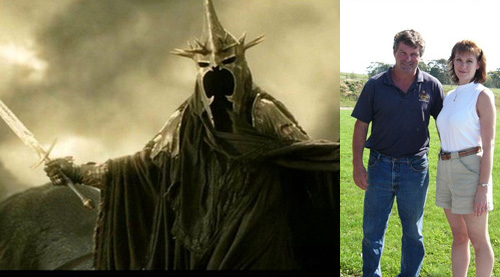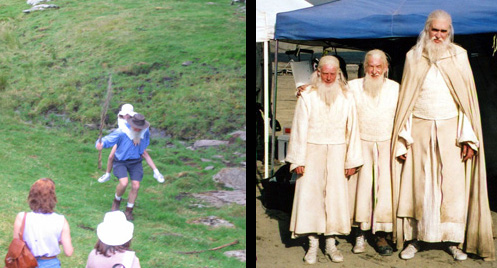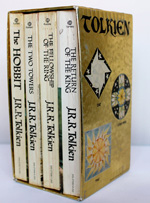
In the mid-1930s, a British professor was marking exams when he found that a student had left a blank page in his examination book. A sentence popped into his mind & he scrawled it on the empty sheet: “In a hole in the ground there lived a hobbit.” The professor was John Ronald Reuel Tolkien, and thus was born The Hobbit.
The Hobbit was only the first published work to be set in Middle-earth; it was followed in 1954–55 by The Lord of the Rings. After Tolkien’s death in 1973 his youngest son, Christopher, took on the role of editor of his father’s unpublished texts. The Silmarillion, with the help of a young Canadian lawyer who later became a renowned fantasy author in his own right (Guy Gavriel Kay), was published in 1977. Other books have followed over the last 25 years, including the 12-volume series History of Middle-earth, which shows the evolution of Tolkien’s books over the course of decades. While The Hobbit was the first published work, Tolkien had been working on what he called his “Middle-earth legendarium” since 1917, while invalided home from the front in World War I.
Reams of text have been written about Tolkien & Middle-earth, from annotated versions of the books to analysis of the themes to in-depth character explorations of both major & minor characters. Milne Library has a number of books in these categories.
In the nearly 70 years since the publication of The Hobbit in 1937, millions of people worldwide have been enthralled with Tolkien’s creation of an entire world, complete with a variety of distinct peoples, languages, & its own mythology. I became one of them when I first read The Lord of the Rings as a teen…although I actually almost never read the books at all. My younger brother & I had both been given boxed sets of The Hobbit & The Lord of the Rings as Christmas gifts, & he immediately read & loved his. As the superior older sister, I loftily looked down my nose at his enthusiasm. It wasn’t until the following October, when there was nothing else to read at home & I was completely bored, that I decided to fill my time with a little bit of the books. Well…I read nonstop for the next few days, & as soon as I finished devouring the books I immediately went back to the beginning & read them again. My brother still likes to remind me what a “Fool of a Took!” I was.

[Left] Witch-King from Peter Jackson’s Lord of the Rings films, [Right] Librarian Sherry Rhodes stands in New Zealand with Chris Cavallero, who portrayed the Witch-King

[Left] Librarian Sherry Rhodes’ daughter, Kit, catches a ride as Pippin on the back of Derek Carver as an orc re-enacting the scene of Merry & Pippin’s abduction in New Zealand [Right] Gandalf body doubles with Sir Ian McKellan
Do you have a story about how you discovered The Lord of the Rings or The Hobbit? We’d love to hear it! And for a little fun… try the Elvish and Hobbit name generators!
Written by Sherry Rhodes, Reference/Instruction Librarian (rhodes@geneseo.edu)


